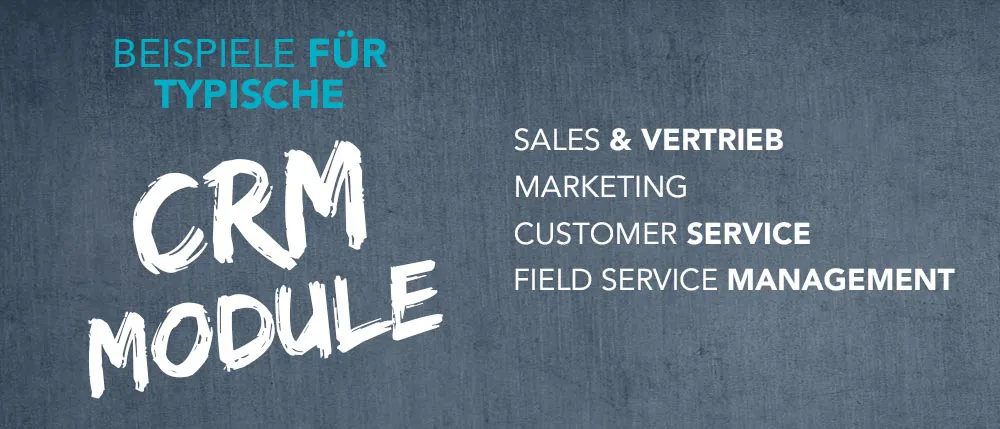Your Customers are the Center of Attentiont The CRM System
as a central Hub
as
Nowadays, companies offering products and services are faced with the challenge of asserting themselves on the market against countless competitors. 🥊 Using a CRM system can help you better recognize and meet your customers’ wants, needs and desires.
Changing Customer Needs
The customers’ needs have changed considerably over the years. Around 70 years ago, personal contact in the corner shop was sufficient to know the desires and needs of customers. The owner of the corner shop (“Tante Emma”) knew all her customers by name. She could also be sure that they would come back the next day, as there weren’t too many stores of this type that could snatch customers away from her. And online shopping hadn’t been invented yet. 😉
Nowadays, things are completely different: with the increasing number of suppliers and products on the market, competitive pressure is also increasing on small and medium-sized companies. Customers are spoilt for choice and are not forced to remain loyal to one supplier or product. Even if customers are actually satisfied, they regularly switch suppliers. Especially since their expectations are constantly rising due to the variety of products. Suppliers are becoming virtually interchangeable. Companies are faced with the challenge of asserting themselves against the competition by meeting the growing demands of customers. And this is where CRM comes into play…
The CRM System as a Hub: everything revolves around the Customer
“CRM” stands for “Customer Relationship Management”. A CRM system serves as a central hub: It helps you to manage, structure, evaluate and analyze the customer data.
The aim is to use the CRM system to acquire new customers, build relationships with them, maintain existing contacts, improve satisfaction and retain the right customers (in the long term). The aim is to make optimum use of customer contacts to achieve success.
A CRM system supports all divisions of the company having direct contact to customers - especially sales, marketing, field service, customer service and business development.
Examples of CRM System Functions
- Lead management - the term “lead” stands for potential customers who are interested in a product.
💡 Managing leads efficiently, you receive on average 20% more sales opportunities than without a good lead management. In addition, efficiently-managed leads are 47% more likely to make a purchase decision.
- Planning and creating campaigns
- Ticketing
- Time management
- Project and event management
- Cross-selling and up-selling
- Creating and processing quotations, orders and invoices
- Social media management
Different Types of CRM Systems
There are basically four different types of CRM systems:
- Communicative CRM system: This system focuses on direct communication with customers via various channels (email, telephone, social media, etc.).
- Analytical CRM system: It evaluates the customer data collected systematically with the aim of gaining insights into individual purchasing behavior.
- Operational CRM system: This system precedes and follows analytical CRM. On the one hand, customer data is collected for analysis. The insights in turn help to further optimize the approach to customers.
- Collaborative CRM system: The system enables collaboration across several departments.

How you benefit from a CRM System - 6 Advantages
- 360° view of your customers: Better and faster communication with your customers is possible because you get a holistic picture of them.
- Central database: Several departments have direct access to information on customers, purchase history, stock levels, etc., so that processes can be handled faster and more smoothly.
- Segmentation options: The information can be used to define target groups more accurately so that more targeted campaigns can be created and implemented.
- More informative analyses and reports: The bundled results provide a better overview and enable more targeted decision-making.
- Automation of workflows: The CRM system can relieve you of tedious tasks such as master data maintenance to a large extent, which saves you a lot of time.
- Optimized internal collaboration: Your teams can work together more productively.
CRM and ERP
The terms “CRM” and “ERP” are easily confused. While an ERP system is used for the comprehensive planning and control of all company resources in line with requirements, a CRM system is a partial aspect of the ERP system. Ideally, the CRM system is integrated into the ERP system so that the two systems have a common database.
Dynamics 365 CRM
This is where the cloud-based enterprise platform Dynamics 365 from Microsoft comes in. Dynamics 365 combines ERP and CRM functions and supports the respective business units with different applications that are fully integrated.
Improve Competitiveness with CRM
With the help of a modern CRM system, it is possible to find out more about the demands of customers in a targeted manner. Using the advantages of CRM, companies can achieve more turnover and profit and improve their competitiveness while at the same time relieving their employees. Nowadays, using a CRM system makes sense not only for large companies, but also for SMEs.
More information
on the topic CRM
on the


 Efficiently manage Customer Relationships
Efficiently manage Customer Relationships

